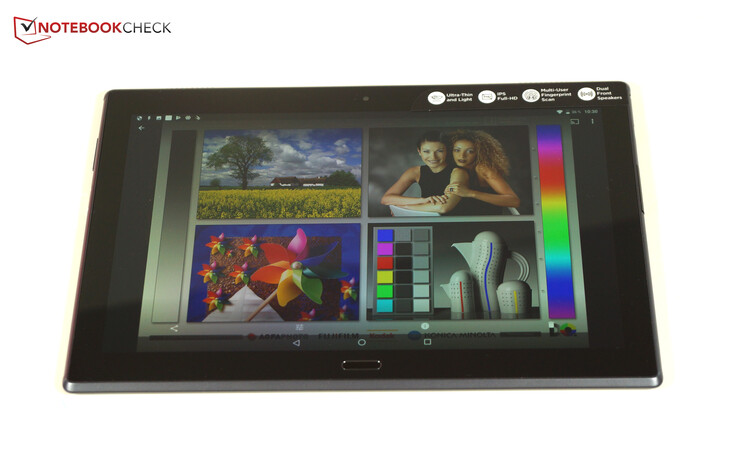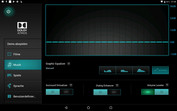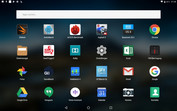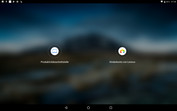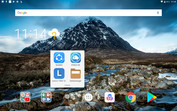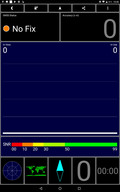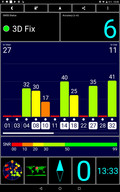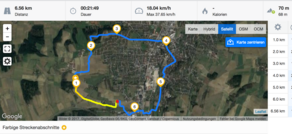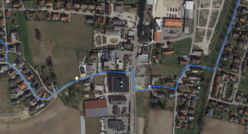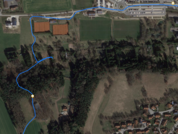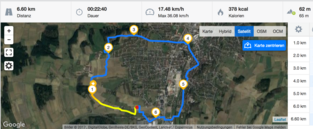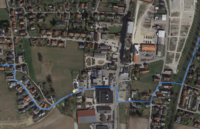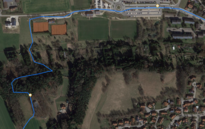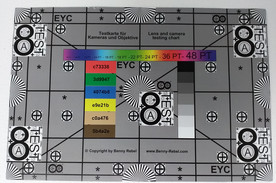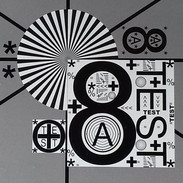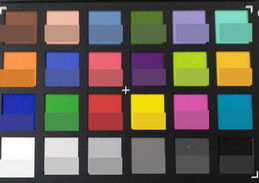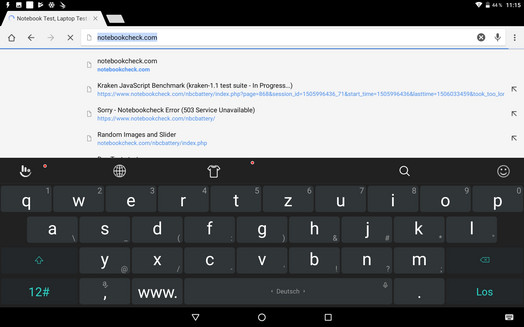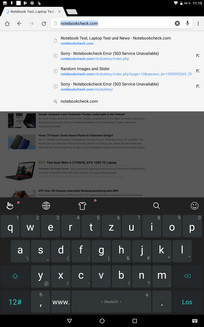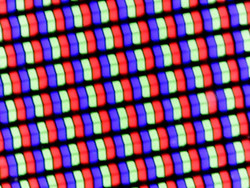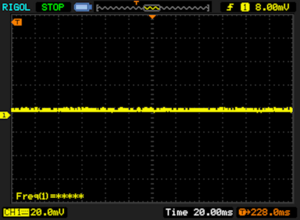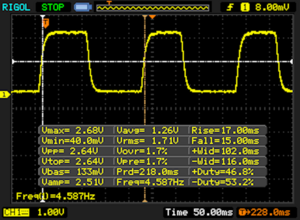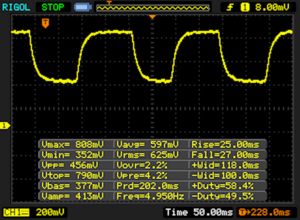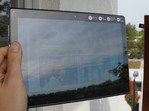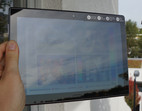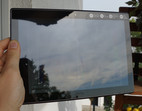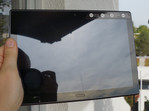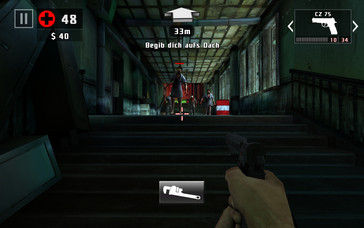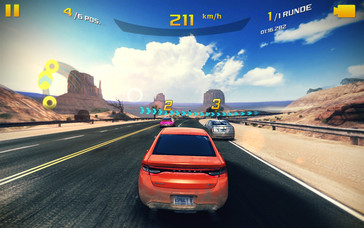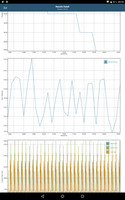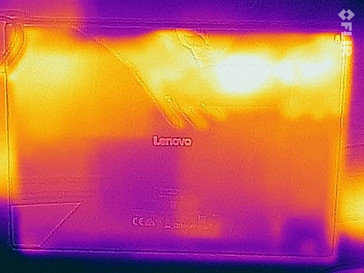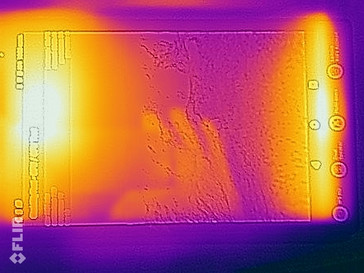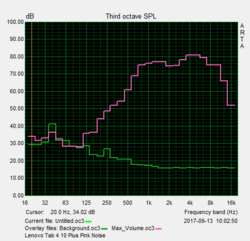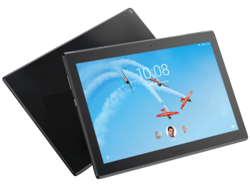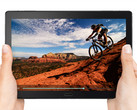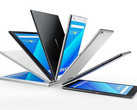Lenovo Tab 4 10 Plus Tablet Review
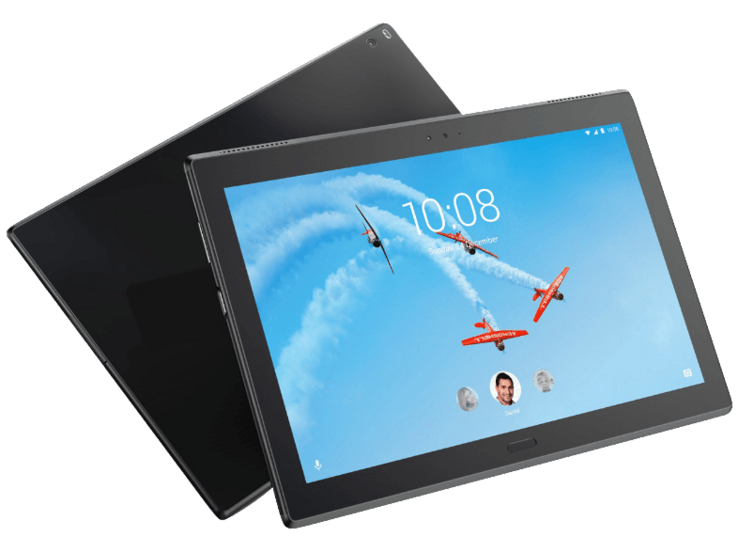
For the original German review, see here.
Lenovo's tablets are always good for a surprise: With its Yoga, the manufacturer was one of the first to implement the convertible idea convincingly. They have built-in kickstands or an amazingly convenient handle including generous room for the battery. Or what about having a projector installed directly into the tablet? Lenovo's Tab 4 10 Plus is sooner a traditional mid-range tablet but Lenovo has come up with something special for it anyway: Special accessory packs allow optimizing the tablet for children or for work, or Amazon's personal assistant Alexa can be set up.
If all of this is not needed, potential buyers still get a 10.1-inch tablet with a fairly good memory configuration and a mid-range SoC. Its slim design and a glass rear should convince in terms of looks. Consumers also have some alternatives that we use for comparison. For example, the company's own Medion Lifetab P1050, Asus' ZenPad 10, Huawei's MediaPad M3 Lite or Asus' ZenPad 3S 10. Another interesting question is whether spending almost twice as much compared to Lenovo's Tab 4 10 is worthwhile.
Case
At 7.1 millimeters, the thickness of Lenovo's Tab 4 10 is on a normal level for a tablet from this category. The casing's other dimensions are not unusual for a device with a 16:10 screen. The weight of 475 grams is even a bit lower than those of some comparison devices. Lenovo particularly emphasizes the glass rear that is either available in black or white (Aurora Black or Sparkling White) depending on the selected color. The glass layers refract the light gently. This creates a similar effect as some Honor smartphones, which looks very elegant. A disadvantage is the uncountable fingerprints that accumulate on the surface very quickly.
Pressure on the front or back does not affect the tablet much. However, it can be twisted visibly and then also produces an audible cracking noise. The overall stability impression is nevertheless good.
Connectivity
With 4 GB of working memory and 64 GB for storing data, Lenovo's Tab 4 10 is well-equipped - it is even better than all the comparison devices. None of them have more than 32 GB of storage. Furthermore, a micro-SD card can be inserted for expanding the storage. It can be utilized as either internal or external memory. However, apps can only be moved to it when it is formatted as internal storage. (Note: Only a model with 2 GB of RAM and 16 GB of ROM was found in US online retailers at the time of translation).
The USB port is implemented as USB Type-C and thus it does not matter which way around the plug is inserted. USB OTG is supported but only at USB 2.0 speed for transferring data.
Software
Lenovo has recently started a policy of installing an as pure as possible Android on all its devices. Thus, the Tab 4 10 Plus also receives a relatively untouched Android 7.1.1. The security patches are dated June 2017 which is not quite up-to-date.
To lower license payments to Microsoft, Microsoft's Office Suite is preloaded. Pleasingly few additional apps are installed otherwise. Thus, purists will only have to uninstall a few additional apps and should other apps be needed, they can be found in the Play Store usually for free.
Communication and GPS
Lenovo's Tab 4 10 Plus supports fast Wi-Fi networks in the 802.11 a/b/g/n/ac standards. This means that the less frequented and thus often faster 5-GHz band can be accessed. Network connections had very high transmission rates in our standardized test. Most comparison devices are much slower on the Internet. Only Huawei's MediaPad M3 Lite could keep up fairly well. The full signal is displayed in the router's vicinity and websites are opened relatively quickly. The reception still achieved 50% at a distance of 10 meters and through three walls and pages opened marginally slower.
The GPS module could not locate us indoors, and it also took quite long before we were found outdoors. The accuracy increased gradually and achieved an average accuracy of six meters after 1 - 2 minutes.
Lenovo's Tab 4 10 Plus did a fairly good job in the practical test. We went on a bike ride and included Garmin's Edge 500, a professional navigation system for cyclists, in our bag. The route that our review sample measured was a few meters longer than that of the professional system, which is unusual. The GPS module in Lenovo's Tab 4 10 Plus does not measure 100% accurately, but the tablet can be readily used for navigating in everyday situations.
Cameras
The cameras in Lenovo's Tab 4 10 Plus have a considerably higher resolution than those in the cheaper Tab 4 10: 8 megapixels on the rear and 5 megapixels on the front. This is common in this price range. The photo quality of the front camera is not at all bad. Although bright areas tend to overexpose quickly, the dynamic is quite decent in dark areas. We also liked the image sharpness and the color reproduction is good. However, this should not be compared with a premium smartphone camera. The front camera's quality is nevertheless relatively high for a tablet.
What about the primary camera? It also does a quite good job: Its sharpness is good; the color reproduction is decent but sometimes a bit pale. Large colored areas occasionally look a bit distorted, but the photos have an overall very high standard for a tablet. The dynamics in darker areas could be higher, though. Videos can be recorded in 1080p at 30 FPS. The quality is good but the brightness adapts between scenes with a slight delay.
Lenovo's Tab 4 10 Plus also proves that its photos are relatively sharp in our test lab under defined lighting conditions. We only noticed the somewhat distorted colored areas here. Our comparison test with a reference color space confirms that colors are a bit too pale.
Accessories and Warranty
Lenovo includes a 24-month warranty on its tablets. Please see our Guarantees, Return Policies & Warranties FAQ for country-specific information.
Interestingly, the accessory packs that Lenovo offers are those that we described in the review of Lenovo's Tab 4 10: A protective plastic bumper and stickers make the tablet more child-friendly and easier to use. A Bluetooth keyboard and tablet stand which allow using the device like a laptop are available if the tablet is to be used for work. Another bundle, with a big speaker unit for turning Lenovo's Tab 4 10 Plus into a sound machine and incorporating Amazon's Alexa for making the tablet a personal assistant, is in the works.
Input Devices and Handling
The TouchPal keyboard app is preloaded. However, it is not the premium version of the app and ads are sometimes faded in. It offers many themes and settings, and typing with the app is easy. A large selection of alternative keyboards can be found in Google's Play Store should another keyboard app be preferred.
The touchscreen is very glide-friendly and comfortable to use. It is sensitive into the corners; all inputs are implemented quickly and reliably. The hardware buttons for volume control and standby are situated on the casing's left. They are easy to feel and use. The menu is controlled via onscreen software buttons.
A fingerprint-scanner is situated on the tablet's lower edge. It reliably identified our saved fingerprints. However, it takes a moment before the user interface is really visible when unlocking the tablet from standby via a fingerprint.
Display
Thanks to a resolution of 1920x1200 pixels, Lenovo's Tab 4 10 Plus has another advantage over the Tab 4 10 that only has an HD panel. The reproduction is correspondingly crisper. The average brightness of the Plus model is also much higher: We measured 428 cd/m² in the test lab. This is a very good rate and many other comparison devices cannot match that. The illumination of 94% is also very even and thus the illumination of large colored areas looks homogeneous.
| |||||||||||||||||||||||||
Brightness Distribution: 94 %
Center on Battery: 443 cd/m²
Contrast: 1231:1 (Black: 0.36 cd/m²)
ΔE ColorChecker Calman: 3.3 | ∀{0.5-29.43 Ø4.77}
ΔE Greyscale Calman: 2.9 | ∀{0.09-98 Ø5}
92.5% sRGB (Calman 2D)
Gamma: 2.27
CCT: 6961 K
| Lenovo Tab 4 10 Plus IPS, 1920x1200, 10.1" | Asus ZenPad 10 (Z301ML) IPS, 1280x800, 10.1" | Huawei MediaPad M3 Lite IPS, 1920x1200, 10.1" | Medion Lifetab P10505 IPS, 1920x1080, 10.1" | Asus ZenPad 3S 10 Z500KL IPS, 2048x1536, 9.7" | Lenovo Tab 4 10 IPS, 1280x800, 10.1" | |
|---|---|---|---|---|---|---|
| Screen | -8% | 2% | -77% | -3% | -21% | |
| Brightness middle (cd/m²) | 443 | 392 -12% | 435 -2% | 320 -28% | 486 10% | 316 -29% |
| Brightness (cd/m²) | 428 | 383 -11% | 413 -4% | 308 -28% | 457 7% | 305 -29% |
| Brightness Distribution (%) | 94 | 81 -14% | 93 -1% | 84 -11% | 88 -6% | 86 -9% |
| Black Level * (cd/m²) | 0.36 | 0.25 31% | 0.25 31% | 0.36 -0% | 0.25 31% | 0.2 44% |
| Contrast (:1) | 1231 | 1568 27% | 1740 41% | 889 -28% | 1944 58% | 1580 28% |
| Colorchecker dE 2000 * | 3.3 | 4.2 -27% | 4.4 -33% | 7.5 -127% | 5.2 -58% | 5 -52% |
| Colorchecker dE 2000 max. * | 7.2 | 11.2 -56% | 7.7 -7% | 16.1 -124% | 9 -25% | 8.7 -21% |
| Greyscale dE 2000 * | 2.9 | 2.9 -0% | 3.2 -10% | 10.8 -272% | 4.1 -41% | 5.7 -97% |
| Gamma | 2.27 97% | 2.23 99% | 2.35 94% | 2.3 96% | 2.73 81% | 2.25 98% |
| CCT | 6961 93% | 7115 91% | 7056 92% | 9907 66% | 6579 99% | 7921 82% |
* ... smaller is better
Screen Flickering / PWM (Pulse-Width Modulation)
| Screen flickering / PWM not detected | |||
In comparison: 53 % of all tested devices do not use PWM to dim the display. If PWM was detected, an average of 8084 (minimum: 5 - maximum: 343500) Hz was measured. | |||
Although the black level of 0.36 cd/m² is not bad, it is higher than in many comparison devices. This leads to a contrast ratio of 1200:1 which is basically good, but it is rather weak in the comparison field. Colors look quite good on the screen. We did not determine brightness control via pulse-width modulation and thus sensitive users do not have to worry about screen-flickering.
We can measure the color reproduction more accurately with our spectrophotometer and CalMAN software. A minor color tint was determined at most and the color reproduction is very close to the reference color space. According to the software, the sRGB color space is covered by 92.2%. A good rate.
Display Response Times
| ↔ Response Time Black to White | ||
|---|---|---|
| 32 ms ... rise ↗ and fall ↘ combined | ↗ 17 ms rise | |
| ↘ 15 ms fall | ||
| The screen shows slow response rates in our tests and will be unsatisfactory for gamers. In comparison, all tested devices range from 0.1 (minimum) to 240 (maximum) ms. » 85 % of all devices are better. This means that the measured response time is worse than the average of all tested devices (20.2 ms). | ||
| ↔ Response Time 50% Grey to 80% Grey | ||
| 52 ms ... rise ↗ and fall ↘ combined | ↗ 25 ms rise | |
| ↘ 27 ms fall | ||
| The screen shows slow response rates in our tests and will be unsatisfactory for gamers. In comparison, all tested devices range from 0.165 (minimum) to 636 (maximum) ms. » 88 % of all devices are better. This means that the measured response time is worse than the average of all tested devices (31.6 ms). | ||
The relatively high brightness and responsive ambient light sensor contribute to outdoor use. The glossy screen could become a problem when it reflects the surroundings on a bright day.
The viewing angles are good in all directions. Very slight brightness shifts are only visible when tilting the tablet up or down.
Performance
Qualcomm's Snapdragon 625 SoC is used in mid-range tablets and smartphones, which fits quite well to Lenovo's Tab 4 10 Plus. It provides decent performance with eight cores and a maximum clock of 2 GHz. Only Asus' ZenPad 3S can outperform the Tab 4 10 Plus in our comparison group. The Medion Lifetab P10505 is roughly on par here.
The Adreno 506 is the graphics unit in Lenovo's Tab 4 10 Plus. The core clocks at 650 MHz. The review sample cannot compete with either Asus' ZenPad 3S or Medion's Lifetab P10505. However, it still presents a category-typical performance.
| AnTuTu v6 - Total Score | |
| Asus ZenPad 3S 10 Z500KL | |
| Medion Lifetab P10505 | |
| Lenovo Tab 4 10 Plus | |
| Huawei MediaPad M3 Lite | |
| Lenovo Tab 4 10 | |
| Asus ZenPad 10 (Z301ML) | |
| PCMark for Android | |
| Work performance score | |
| Asus ZenPad 3S 10 Z500KL | |
| Lenovo Tab 4 10 Plus | |
| Huawei MediaPad M3 Lite | |
| Medion Lifetab P10505 | |
| Lenovo Tab 4 10 | |
| Asus ZenPad 10 (Z301ML) | |
| Work 2.0 performance score | |
| Lenovo Tab 4 10 Plus | |
| Asus ZenPad 3S 10 Z500KL | |
| Huawei MediaPad M3 Lite | |
| Lenovo Tab 4 10 | |
| Asus ZenPad 10 (Z301ML) | |
| Geekbench 4.4 | |
| 64 Bit Single-Core Score | |
| Asus ZenPad 3S 10 Z500KL | |
| Lenovo Tab 4 10 Plus | |
| Lenovo Tab 4 10 | |
| Huawei MediaPad M3 Lite | |
| Asus ZenPad 10 (Z301ML) | |
| 64 Bit Multi-Core Score | |
| Lenovo Tab 4 10 Plus | |
| Huawei MediaPad M3 Lite | |
| Asus ZenPad 3S 10 Z500KL | |
| Lenovo Tab 4 10 | |
| Asus ZenPad 10 (Z301ML) | |
| Compute RenderScript Score | |
| Lenovo Tab 4 10 Plus | |
| Huawei MediaPad M3 Lite | |
| Lenovo Tab 4 10 | |
| Asus ZenPad 10 (Z301ML) | |
| GFXBench (DX / GLBenchmark) 2.7 | |
| T-Rex Onscreen | |
| Medion Lifetab P10505 | |
| Asus ZenPad 3S 10 Z500KL | |
| Lenovo Tab 4 10 Plus | |
| Huawei MediaPad M3 Lite | |
| Asus ZenPad 10 (Z301ML) | |
| Lenovo Tab 4 10 | |
| 1920x1080 T-Rex Offscreen | |
| Medion Lifetab P10505 | |
| Asus ZenPad 3S 10 Z500KL | |
| Lenovo Tab 4 10 Plus | |
| Huawei MediaPad M3 Lite | |
| Asus ZenPad 10 (Z301ML) | |
| Lenovo Tab 4 10 | |
| GFXBench 3.0 | |
| on screen Manhattan Onscreen OGL | |
| Medion Lifetab P10505 | |
| Asus ZenPad 3S 10 Z500KL | |
| Lenovo Tab 4 10 Plus | |
| Huawei MediaPad M3 Lite | |
| Asus ZenPad 10 (Z301ML) | |
| Lenovo Tab 4 10 | |
| 1920x1080 1080p Manhattan Offscreen | |
| Medion Lifetab P10505 | |
| Asus ZenPad 3S 10 Z500KL | |
| Lenovo Tab 4 10 Plus | |
| Huawei MediaPad M3 Lite | |
| Asus ZenPad 10 (Z301ML) | |
| Lenovo Tab 4 10 | |
| GFXBench 3.1 | |
| on screen Manhattan ES 3.1 Onscreen | |
| Medion Lifetab P10505 | |
| Lenovo Tab 4 10 Plus | |
| Asus ZenPad 3S 10 Z500KL | |
| Huawei MediaPad M3 Lite | |
| Asus ZenPad 10 (Z301ML) | |
| 1920x1080 Manhattan ES 3.1 Offscreen | |
| Medion Lifetab P10505 | |
| Asus ZenPad 3S 10 Z500KL | |
| Lenovo Tab 4 10 Plus | |
| Huawei MediaPad M3 Lite | |
| Asus ZenPad 10 (Z301ML) | |
| GFXBench | |
| on screen Car Chase Onscreen | |
| Medion Lifetab P10505 | |
| Asus ZenPad 3S 10 Z500KL | |
| Lenovo Tab 4 10 Plus | |
| Huawei MediaPad M3 Lite | |
| 1920x1080 Car Chase Offscreen | |
| Medion Lifetab P10505 | |
| Asus ZenPad 3S 10 Z500KL | |
| Lenovo Tab 4 10 Plus | |
| Huawei MediaPad M3 Lite | |
The browser performance of Lenovo's Tab 4 10 Plus is also in the midfield. Websites are opened at an average speed. Demanding HTML5 pages, such as letsplay.ouigo.com, need quite a long time to load and are then very jerky.
| Octane V2 - Total Score | |
| Asus ZenPad 3S 10 Z500KL (Chrome Version 58) | |
| Medion Lifetab P10505 (Chrome 52) | |
| Lenovo Tab 4 10 Plus (Chrome 60) | |
| Huawei MediaPad M3 Lite (Chrome 58) | |
| Lenovo Tab 4 10 (Chrome 60) | |
| Asus ZenPad 10 (Z301ML) (Chrome 59) | |
| WebXPRT 2015 - Overall | |
| Lenovo Tab 4 10 Plus (Chrome 60) | |
| Lenovo Tab 4 10 (Chrome 60) | |
| Huawei MediaPad M3 Lite (Chrome 58) | |
| Asus ZenPad 10 (Z301ML) (Chrome 59) | |
| JetStream 1.1 - Total Score | |
| Asus ZenPad 3S 10 Z500KL (Chrome Version 58) | |
| Medion Lifetab P10505 (Chrome 52) | |
| Lenovo Tab 4 10 Plus (Chrome 60) | |
| Huawei MediaPad M3 Lite (Chrome 58) | |
| Asus ZenPad 10 (Z301ML) (Chrome 59) | |
| Mozilla Kraken 1.1 - Total | |
| Asus ZenPad 10 (Z301ML) (Chrome 59) | |
| Lenovo Tab 4 10 (Chrome 60) | |
| Huawei MediaPad M3 Lite (Chrome 58) | |
| Lenovo Tab 4 10 Plus (Chrome 60) | |
| Medion Lifetab P10505 (Chrome 52) | |
| Asus ZenPad 3S 10 Z500KL (Chrome Version 58) | |
* ... smaller is better
Lenovo's Tab 4 10 Plus achieves good rates in micro-SD card access. It is faster than all comparison devices but does not come close to exhausting the maximum transfer rates of our Toshiba Exceria Pro M501 reference card. Accessing the internal storage is also relatively fast and none of the comparison devices can keep up here. It is especially pleasing that the write speed is also very fast.
| Lenovo Tab 4 10 Plus | Asus ZenPad 10 (Z301ML) | Huawei MediaPad M3 Lite | Medion Lifetab P10505 | Asus ZenPad 3S 10 Z500KL | Lenovo Tab 4 10 | |
|---|---|---|---|---|---|---|
| AndroBench 3-5 | -37% | -24% | -51% | -41% | -17% | |
| Sequential Read 256KB (MB/s) | 270.1 | 216 -20% | 133.5 -51% | 142.9 -47% | 249.6 -8% | 275 2% |
| Sequential Write 256KB (MB/s) | 135.5 | 66 -51% | 60.3 -55% | 44 -68% | 63 -54% | 45.3 -67% |
| Random Read 4KB (MB/s) | 37.3 | 23 -38% | 38.8 4% | 23 -38% | 31.34 -16% | 32.3 -13% |
| Random Write 4KB (MB/s) | 11.8 | 9.8 -17% | 8.5 -28% | 11.7 -1% | 6.38 -46% | 8.9 -25% |
| Sequential Read 256KB SDCard (MB/s) | 83.9 | 40.9 -51% | 78.7 -6% | 18.9 -77% | 34.42 ? -59% | 84.5 1% |
| Sequential Write 256KB SDCard (MB/s) | 61.1 | 34.9 -43% | 56.8 -7% | 15.4 -75% | 23.97 ? -61% | 59.9 -2% |
Games
It is possible to play games on Lenovo's Tab 4 10 Plus. However, the graphics unit is a bit slower than those in the fastest comparison devices. Consequently, an average of only 24 FPS is achieved in graphically demanding games like Asphalt 8 when using very high details, making smooth gameplay impossible. In return, a smooth 30 FPS is achieved in low details. Even the less-demanding game Dead Trigger 2 manages 30 FPS, and casual games like Angry Birds run smoothly.
The position sensor and touchscreen control function very well and do not limit the gaming experience in any way.
| Asphalt 8: Airborne | |||
| Settings | Value | ||
| high | 24 fps | ||
| very low | 30 fps | ||
| Dead Trigger 2 | |||
| Settings | Value | ||
| high | 30 fps | ||
Emissions
Temperature
We measured a maximum temperature of 33.6 °C on the casing during load. The casing heats up slightly but the user will hardly notice it. The casing's temperature is relatively homogeneous over the entire device. The maximum idle temperature of 30.9 °C is even much lower.
Our stress test with GFXBench's battery test shows that the SoC's performance will unlikely throttle during high load over a prolonged time.
(+) The maximum temperature on the upper side is 33.6 °C / 92 F, compared to the average of 33.6 °C / 92 F, ranging from 20.7 to 53.2 °C for the class Tablet.
(+) The bottom heats up to a maximum of 32.9 °C / 91 F, compared to the average of 33.2 °C / 92 F
(+) In idle usage, the average temperature for the upper side is 28.5 °C / 83 F, compared to the device average of 30 °C / 86 F.
Speakers
Front-sided stereo speakers are a good idea when good tablet sound is the objective. Thus, Lenovo has done good fundamental work. Software by Dolby additionally supports the speakers with sound enhancements and diverse presets that make it easy to optimize the sound for music, videos or games. A manual equalizer is also present for users who want to set the perfect sound by hand.
The presets, in fact, make an audible difference. However, since the speakers are not high-end units but rather tablet speakers, the sound is only decent in most settings but not outstanding. The lack of low tones is very audible, mids are generally a bit understated, and the trebles are sometimes emphasized too strongly. The sound is quite powerful at over 89 dB(A) when desired. Lenovo's Tab 4 10 Plus can be used as a sound system for occasional music sampling or when other speakers are not available. However, tablets with a much better sound system exist.
Speakers or headphones can be connected via the 3.5-mm jack or Bluetooth. They transmit a clear audio signal to the playback devices.
Lenovo Tab 4 10 Plus audio analysis
(+) | speakers can play relatively loud (89.3 dB)
Bass 100 - 315 Hz
(-) | nearly no bass - on average 34.1% lower than median
(±) | linearity of bass is average (7% delta to prev. frequency)
Mids 400 - 2000 Hz
(±) | reduced mids - on average 5.8% lower than median
(+) | mids are linear (5.9% delta to prev. frequency)
Highs 2 - 16 kHz
(+) | balanced highs - only 2.9% away from median
(+) | highs are linear (3% delta to prev. frequency)
Overall 100 - 16.000 Hz
(±) | linearity of overall sound is average (22% difference to median)
Compared to same class
» 67% of all tested devices in this class were better, 6% similar, 28% worse
» The best had a delta of 7%, average was 20%, worst was 129%
Compared to all devices tested
» 63% of all tested devices were better, 6% similar, 31% worse
» The best had a delta of 4%, average was 24%, worst was 134%
Asus ZenPad 3S 10 Z500KL audio analysis
(+) | speakers can play relatively loud (85.9 dB)
Bass 100 - 315 Hz
(-) | nearly no bass - on average 22.6% lower than median
(±) | linearity of bass is average (13.5% delta to prev. frequency)
Mids 400 - 2000 Hz
(+) | balanced mids - only 4.7% away from median
(+) | mids are linear (4.3% delta to prev. frequency)
Highs 2 - 16 kHz
(±) | higher highs - on average 5.5% higher than median
(+) | highs are linear (5.9% delta to prev. frequency)
Overall 100 - 16.000 Hz
(±) | linearity of overall sound is average (20% difference to median)
Compared to same class
» 56% of all tested devices in this class were better, 8% similar, 36% worse
» The best had a delta of 7%, average was 20%, worst was 129%
Compared to all devices tested
» 50% of all tested devices were better, 8% similar, 41% worse
» The best had a delta of 4%, average was 24%, worst was 134%
Frequency diagram comparison (checkboxes above can be turned on/off!)
Energy Management
Power Consumption
The power consumption is on an average level for this category. Some devices, such as the Asus ZenPad 10, are more energy-saving and others consume considerably more power, such as Medion's Lifetab P10505. Our review sample's maximum consumption during load of over 7 watts is fairly high, while the average load consumption of 5 watts is comparatively low. Thus, the device should consume relatively little power in normal use, while it needs a lot of energy during unusual peak loads over a prolonged time.
| Off / Standby | |
| Idle | |
| Load |
|
Key:
min: | |
| Lenovo Tab 4 10 Plus 7000 mAh | Asus ZenPad 10 (Z301ML) 4680 mAh | Huawei MediaPad M3 Lite 6600 mAh | Medion Lifetab P10505 7000 mAh | Asus ZenPad 3S 10 Z500KL 7800 mAh | Lenovo Tab 4 10 7000 mAh | |
|---|---|---|---|---|---|---|
| Power Consumption | 19% | -12% | -43% | -26% | 5% | |
| Idle Minimum * (Watt) | 1.23 | 0.76 38% | 1.45 -18% | 2.01 -63% | 1.57 -28% | 1.09 11% |
| Idle Average * (Watt) | 3.92 | 3.23 18% | 4.44 -13% | 4.82 -23% | 4 -2% | 3.71 5% |
| Idle Maximum * (Watt) | 4.03 | 3.35 17% | 4.61 -14% | 4.89 -21% | 4.09 -1% | 3.84 5% |
| Load Average * (Watt) | 5 | 4.79 4% | 6.21 -24% | 8.35 -67% | 7.99 -60% | 5.07 -1% |
| Load Maximum * (Watt) | 7.09 | 5.72 19% | 6.33 11% | 9.91 -40% | 9.71 -37% | 6.88 3% |
* ... smaller is better
Battery Runtime
Lenovo's Tab 4 10 Plus is well-equipped with its high-capacity battery of 7000 mAh or 26.6 Wh. However, it is just as strong as the one in Lenovo's Tab 4 10. The battery life in the Wi-Fi test between both devices only differs marginally: The Tab 4 10 Plus achieves 10:47 hours, and the Tab 4 10 manages quarter-of-an-hour less. Thus, neither device has to hide in the comparison field; not even Asus' ZenPad 3S 10 with an even higher capacity battery lasts as long. Huawei's MediaPad M3 Lite can offer longer battery runtimes, though.
Lenovo's Tab 4 10 Plus easily gets through a workday plus two hours of overtime in practice. One charged battery should be enough to get through several days of normal mixed use and prolonged standby periods. Recharging takes 3 hours with the included charger.
| Lenovo Tab 4 10 Plus 7000 mAh | Asus ZenPad 10 (Z301ML) 4680 mAh | Huawei MediaPad M3 Lite 6600 mAh | Medion Lifetab P10505 7000 mAh | Asus ZenPad 3S 10 Z500KL 7800 mAh | Lenovo Tab 4 10 7000 mAh | |
|---|---|---|---|---|---|---|
| Battery runtime | -13% | 8% | -15% | -10% | -3% | |
| Reader / Idle (h) | 27.1 | 22 -19% | 22.4 -17% | 24.1 -11% | ||
| H.264 (h) | 13.3 | 10.4 -22% | 13.9 5% | |||
| WiFi v1.3 (h) | 10.8 | 7.8 -28% | 13.4 24% | 9.4 -13% | 9.7 -10% | 10.5 -3% |
| Load (h) | 4.3 | 5 16% | 5.2 21% | 3.4 -21% |
Pros
Cons
Verdict
A glass-covered back would not have been necessary for convincing us of the qualities of Lenovo's Tab 4 Plus. However, it is a visual highlight. The review sample also hides many positive traits under its hood, which were soon revealed in the test: The quite bright and color-accurate screen with good viewing angles, for example, or the convincing system performance. The fast memory access belongs to this list of traits, as does the fast Wi-Fi, decent battery life, and the relatively good cameras for a tablet. Have we mentioned the generous memory configuration yet?
It is even possible to acquire matching accessory packs that equip the tablet for various purposes if wanted. The fingerprint-scanner is also nice to have. What does Lenovo's Tab 4 10 Plus leave to desire? A faster GPS connection would be helpful, the gaming performance could be higher, the speakers' sound could be better, and stylus support would have been an additional highlight.
Lenovo's Tab 4 10 Plus is a good mid-range tablet with many highlights: generous memory, good battery runtimes, bright screen, and fast Wi-Fi. As it presents hardly any drawbacks, it gets a clear purchase recommendation.
In a nutshell, Lenovo's Tab 4 10 Plus is a very well-designed mid-range tablet that does not have much in common with the cheaper Tab 4 10. Although the surcharge is very evident compared with the Tab 4 10, the buyer gets a lot for the money. Other equally priced tablets might offer a bit more in single aspects, but Lenovo's Tab 4 10 Plus is a good overall package.
Lenovo Tab 4 10 Plus
- 09/29/2017 v6 (old)
Florian Wimmer




